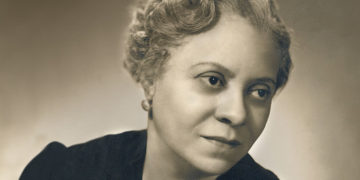DETROIT — The Detroit Symphony Orchestra opened its doors for its first concert of the 2021-2022 Classical Series, Thursday. The opening marked DSO’s first concert for full audiences since March 2020. The Orchestra was closed for 18 months due to the pandemic and reopens under new health and safety measure in places for full-capacity audiences.
“What we’ve initiated is proof of vaccination, or a negative COVID test,” said Jill Elder, Vice President & Chief Development Officer, DSO. “In addition, we are asking all of our patrons whether vaccinated or not to wear their masks. We’re also ensuring that there is contactless entry, e-ticketing, hand sanitizing stations, all to instill confidence and maintain safety.”
The opening marks the first full year for new music director Jader Bignamini who is trilled for music to bring people people back together again this season.
“I can’t wait to feel the warmth of our amazing audience,” said Bignamini. “Being together after so many months, we will celebrate not only a new season but also our lives—the celebration of our hope in a better future for everyone and the celebration of the great job that our orchestra and our staff did during this pandemic to arrive at this new beginning.”
The DSO also responded to the reality of our time in how it plans to welcome more diverse composers in an era of recognizing diversity and inclusion.
“This is something that orchestras have been bad at in the past,” said Erik Rönmark, Vice President & General Manager, DSO. “Not just recognizing diverse composers and premiering their work, that has happened throughout the time, but not continuingly playing them.”

Rönmark noted the DSO will be doing work by Florence Price this fall. Price was the first African-American woman to have a symphony premiered by a major orchestra in the 1930’s. Price’s third major premiere was by the DSO at the DIA in the 1940s.
“It’s a great work of music,” Rönmark continued. “I discovered it way too late but as people are researching and bringing this up, the shame is, we haven’t played it more since 1940. I hope that is something that changes with orchestras in general, not just rediscovering works that should’ve had a higher prominence in our repertoire, but we should keep commissioning by diverse composers.”
Jader’s vision for the orchestra will be revealed in the form of an all-new layout for Orchestra Hall’s stage. At Jader’s direction, a series of stepped, elevated risers have been installed to allow the conductor and audience alike to maintain eye contact with each musician. It’s a part of an all-new layout for the Orchestra Hall stage.